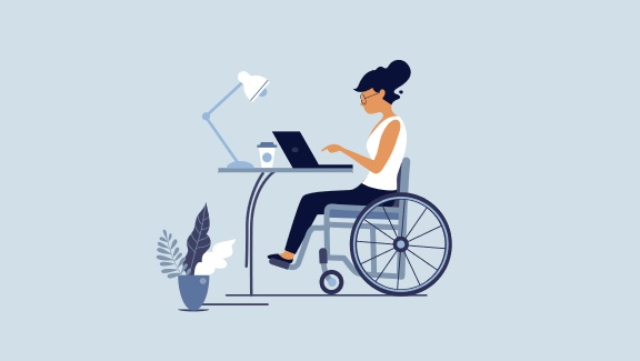Being employed is a huge part of life for many people, providing an income and taking up plenty of our waking hours. But for people with disabilities, it can be hard to find a job that also allows them to manage their healthcare needs, or even be able to have the same opportunities as the rest of the team.
This sometimes rough road means that only 53.2% of disabled people are in employment, compared to 81.8% of non-disabled people. This is commonly known as the disability employment gap, and is worse for men than it is for women, and those in the 50-59 years age group.
But what are the barriers to employment for disabled people, and what can be done about it? We take a look.
Unconscious bias
As much as employers might think that they have a fair hiring process, they’re only human, and that means that they’re susceptible to bias. People can unintentionally make assumptions about others from their name or physical appearance, which can alter the way they perceive them. In a work situation, this means that they might not consider a candidate for a role, without even giving the candidate a chance to explain how they fit the job requirements.
There are several things that employers can do when it comes to tackling unconscious bias, not least arranging training for their employees, and considering using blind CVs.
Lack of flexible working
Flexible hours benefit many people, from those with caring responsibilities, to those who just like to get their shopping done and visit the gym during off-peak hours. For people with disabilities, flexible hours are a crucial part of being able to manage their condition, especially if it’s one that can flare up with little notice.
If employers aren’t able to be flexible with working hours, they should be open to discussion when it comes to working location, if it also meets business needs. There is no one-size-fits-all approach for this issue, so making sure to work with employees to find a solution, rather than seeing it as an annoying problem, is key to success and happiness.
Lack of variety in contract types
Full-time employment, even with flexible hours, isn’t for everyone. Whether that’s because of other responsibilities, energy levels as a result of a medical condition, or needing to attend regular appointments, research shows that disabled people are more likely to work part-time than non-disabled people.
When hiring, companies should consider if they can make a job part-time, whether that means just hiring one person, or as part of a job share. They should then make this clear in their advert, and encourage people who are looking for this type of work to apply. Additionally, they should ensure that they do not discriminate against someone who is looking for a job share – they should make the decision about whether this would work for the role before they make the advert live.
A fairer workplace
Diversity is key to the workforce. Not only is considering the needs of disabled people an essential human right, but it makes for a wider range of skills and experience in the team, which can be beneficial to the success of the business.
Stay connected and sign up for job alerts here
17 Jan 2023 • by Heather Murphy, Content Producer, and Researcher

